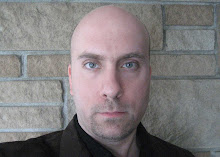The Tao Te Ching is a great collection of aphorisms, very fruitful to contemplate, one of my favorite books. In a very concise way, the Tao Te Ching explores "the Force," non-action (detachment), right conduct, the process of awareness, the problem of desire, the reconciliation of opposites, how Nature exemplifies wholeness, the relationship between government and individual, among other subjects. Lao Tzu doesn’t emphasize the distinction between awareness and consciousness the way I do in my model. I don’t see the Tao Te Ching as a comprehensive model of conscious development. The Tao Te Ching has more to say about relaxing into awareness than developing consciousness, and this can lead to the problem I’ve defined elsewhere as the "witness protection program" prevalent in Eastern teachings. There are specific differences between my model and the Tao Te Ching, features of my model that have no correlation in the Tao Te Ching. Yet there are also many parallels between the content of the Tao Te Ching and my model. I wrote an interpolation of the Tao Te Ching, called "The Way of the Force," in which I give my understanding of the meaning of each of the chapters, using the language that I’m familiar with.
Friday, March 13, 2009
Subscribe to:
Post Comments (Atom)

No comments:
Post a Comment